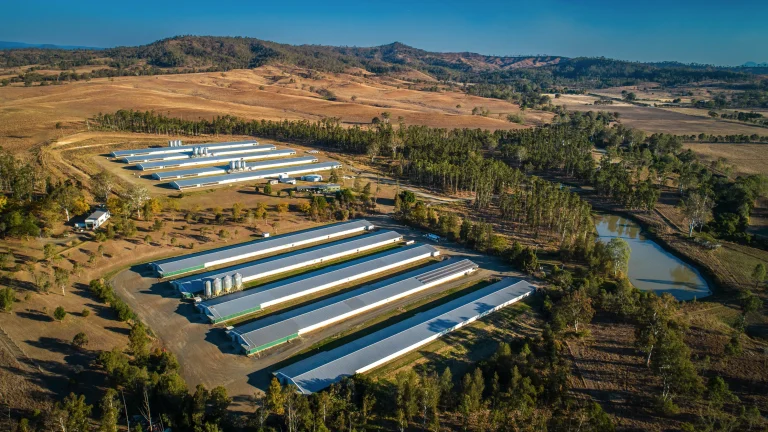Analysis of Rural Land Price Trends in Queensland: A Comprehensive Market Overview
Queensland’s agricultural sector continues to demonstrate resilience and growth potential, making the analysis of rural land price trends in Queensland essential for investors, farmers, and agricultural stakeholders. The state’s diverse agricultural landscape, from cattle stations to horticultural operations, presents unique opportunities and challenges that require careful evaluation. At Agribusiness Horizons, we understand these market dynamics and help clients navigate the complexities of Queensland’s rural property market to make informed investment decisions.
Understanding rural land price movements requires examining multiple factors including seasonal conditions, commodity markets, infrastructure development, and investor sentiment. Queensland’s vast agricultural regions each exhibit distinct characteristics that influence property values, from the fertile coastal areas to the expansive grazing lands of the interior. Our expertise in analyzing these market trends enables us to provide clients with strategic insights that support successful property transactions and long-term investment strategies.
Queensland’s Agricultural Landscape and Market Fundamentals
Queensland encompasses approximately 173 million hectares, with roughly half dedicated to agricultural production. The state’s diverse climate zones support various agricultural enterprises, from intensive horticulture in coastal regions to extensive cattle operations in the west. This diversity creates multiple market segments, each with distinct price dynamics and investment characteristics.
The agricultural economy in Queensland benefits from proximity to Asian markets, established infrastructure networks, and favorable growing conditions across many regions. These advantages contribute to sustained demand for productive agricultural land, particularly properties with reliable water access and modern infrastructure. Market analysis reveals that properties combining multiple agricultural enterprises often command premium values due to their diversification benefits and operational flexibility.
Recent infrastructure investments, including improved transportation networks and processing facilities, have enhanced the attractiveness of rural properties in previously undervalued regions. These developments create opportunities for astute investors who can identify properties positioned to benefit from infrastructure improvements and market access enhancements.
Regional Price Variations and Market Drivers
The analysis of rural land price trends in Queensland reveals significant regional variations driven by local factors including rainfall patterns, soil quality, infrastructure access, and proximity to markets. Premium agricultural regions consistently command higher values per hectare, reflecting their superior productive capacity and operational advantages.
Coastal and high-rainfall regions typically experience stronger price appreciation due to their versatility and reliability for various agricultural enterprises. These areas attract both domestic and international investors seeking stable returns and capital appreciation potential. The consistent demand for properties in these regions creates competitive market conditions that support price growth.
Conversely, properties in variable rainfall zones may experience more volatile price movements, often correlating with seasonal conditions and commodity price cycles. However, these regions can offer attractive entry points for investors with appropriate risk tolerance and long-term investment horizons.
Water security emerges as a critical factor influencing property values across all regions. Properties with secure water allocations or access to reliable water sources command significant premiums, reflecting the fundamental importance of water in agricultural operations. This trend has intensified as climate variability increases and water resources become more valuable.
Investment Patterns and Market Participants
Queensland’s rural property market attracts diverse investor types, from local farming families expanding operations to institutional investors seeking agricultural exposure. Each participant group brings different investment criteria and risk tolerances, creating varied demand patterns across property types and price ranges.
Family farming operations often focus on properties that complement existing enterprises or provide expansion opportunities. These buyers typically prioritize operational synergies and long-term productivity potential over short-term returns. Their intimate knowledge of local conditions and agricultural practices enables them to identify value opportunities that may be overlooked by other market participants.
Institutional investors increasingly recognize agricultural property as an attractive asset class, bringing significant capital to the market. These investors often target larger properties with established operations and professional management structures. Their participation elevates market standards and can drive price appreciation in premium property segments.
International investors contribute another dimension to market dynamics, often seeking properties that provide exposure to Australian agriculture and potential immigration pathways. Their participation varies with currency movements, regulatory changes, and global economic conditions, creating additional complexity in market analysis.
Commodity Markets and Agricultural Productivity
Agricultural commodity prices significantly influence rural land values, though the relationship varies by property type and regional characteristics. Properties producing high-value crops or livestock typically show stronger correlation with commodity price movements, while diversified operations may demonstrate more stable value patterns.
The analysis of rural land price trends in Queensland must consider the cyclical nature of agricultural commodities and their impact on property cash flows. Properties with strong productive capacity and operational flexibility can capitalize on favorable commodity cycles while maintaining resilience during challenging periods.
Technological advances in agricultural production continue to enhance property productivity and efficiency. Properties incorporating modern technology and sustainable practices often command premium values, reflecting their superior operational performance and future adaptability. These improvements contribute to long-term value appreciation beyond commodity price movements.
Climate variability and seasonal conditions create additional complexity in property valuation and market analysis. Properties with climate resilience features, including drought tolerance and flood protection, demonstrate enhanced value stability and investor appeal.
Infrastructure Development and Market Access
Transportation infrastructure plays a crucial role in determining rural property values, with properties enjoying superior market access typically commanding premium prices. Recent investments in road, rail, and port infrastructure have enhanced the attractiveness of previously isolated agricultural regions.
Processing facilities and value-adding infrastructure create additional demand for nearby rural properties by reducing transportation costs and improving operational efficiency. The development of new processing capacity can significantly impact regional property values, creating opportunities for investors who anticipate these developments.
Digital infrastructure, including reliable internet connectivity, increasingly influences property values as modern agricultural operations require sophisticated communication and data management capabilities. Properties with access to high-speed internet and telecommunications infrastructure demonstrate enhanced operational potential and market appeal.
Comparison of Queensland Agricultural Regions
| Region | Primary Enterprises | Water Security | Infrastructure Access | Market Characteristics |
|---|---|---|---|---|
| Darling Downs | Grain, cotton, cattle | Moderate to high | Excellent | Premium grain country with consistent demand |
| Central Queensland | Cattle, grain, coal seam gas | Variable | Good | Diverse opportunities with resource sector influence |
| Far North Queensland | Sugar, horticulture, cattle | High in coastal areas | Moderate | Specialized crops with export focus |
| South East Queensland | Horticulture, intensive agriculture | High | Excellent | Premium values due to urban proximity |
| Western Queensland | Cattle, sheep | Low to moderate | Limited | Extensive operations with climate exposure |
Agribusiness Horizons’ Approach to Queensland Market Analysis
At Agribusiness Horizons, our analysis of rural land price trends in Queensland combines comprehensive market research with deep agricultural expertise to provide clients with actionable insights. We utilize advanced data analytics, local market knowledge, and industry relationships to identify opportunities and assess risks across Queensland’s diverse agricultural regions.
Our valuation methodology incorporates multiple factors including soil quality, water resources, infrastructure access, and operational efficiency to provide accurate property assessments. We consider both current market conditions and future potential to help clients make informed investment decisions that align with their objectives and risk tolerance.
Our team’s extensive experience in Queensland’s agricultural markets enables us to identify emerging trends and opportunities before they become widely recognized. This expertise allows us to guide clients toward properties and regions positioned for superior performance, whether they seek capital appreciation, income generation, or operational synergies.
We provide ongoing market intelligence and advisory services to help clients optimize their agricultural property portfolios. Our relationships with local agricultural professionals, including agronomists, water specialists, and farm managers, ensure our clients receive comprehensive support throughout their property ownership journey.
Market Timing and Strategic Considerations
Successful investment in Queensland’s rural property market requires careful consideration of market timing and strategic positioning. Our analysis reveals that properties purchased during market downturns often provide superior long-term returns, though timing these cycles requires expertise and market insight.
Seasonal factors significantly influence market activity, with property sales typically peaking during favorable seasonal conditions when properties can be viewed at their best. Understanding these patterns helps both buyers and sellers optimize their transaction timing for better outcomes.
Economic cycles and interest rate movements create additional timing considerations, as agricultural property values demonstrate sensitivity to financing costs and broader economic conditions. Properties with strong cash flows and operational efficiency show greater resilience during challenging economic periods.
The analysis of rural land price trends in Queensland suggests that properties with diversification potential and sustainable practices are positioned for continued value appreciation. Climate change adaptation and environmental stewardship increasingly influence buyer preferences and property values.
Future Outlook and Investment Implications
Queensland’s rural property market outlook remains positive, supported by strong agricultural fundamentals, growing global food demand, and the state’s competitive advantages in agricultural production. However, success requires careful property selection and strategic positioning to capitalize on emerging opportunities.
Water security will continue to be a critical factor influencing property values, with properties offering secure water access likely to command increasing premiums. Climate adaptation and sustainable practices will become increasingly important for maintaining property values and operational viability.
Technology adoption and operational efficiency will differentiate properties in the market, with modern, well-managed operations likely to outperform traditional properties. Investors should consider properties with potential for operational improvements and technology integration.
The growing focus on environmental, social, and governance factors in investment decisions will influence rural property markets. Properties demonstrating sustainable practices and positive environmental outcomes are likely to attract premium investor interest and valuations.
Conclusion
The analysis of rural land price trends in Queensland reveals a complex but promising market environment characterized by regional diversity, multiple value drivers, and evolving investor preferences. Success in this market requires comprehensive understanding of local conditions, agricultural fundamentals, and broader economic factors that influence property values.
Queensland’s agricultural sector offers compelling investment opportunities for those who understand the market dynamics and can identify properties positioned for superior performance. The state’s diverse agricultural landscape, favorable climate conditions, and strategic market access create multiple pathways for successful investment outcomes.
As you consider your involvement in Queensland’s rural property market, several questions merit consideration: How will climate change and water security concerns reshape property values in different regions? What role will technology and sustainable practices play in determining future property performance? How can investors best position themselves to capitalize on infrastructure development and market access improvements?
At Agribusiness Horizons, we possess the expertise and market knowledge to help you navigate these complexities and achieve your agricultural property investment objectives. Our comprehensive approach to market analysis, combined with our deep understanding of Queensland’s agricultural sectors, positions us to provide the insights and guidance you need for successful property transactions. Contact us today to discuss how we can assist you in capitalizing on Queensland’s rural property market opportunities and achieving your investment goals.



